"In my opinion the street Punch is one of those extravagant reliefs from the realities of life which would lose its hold upon the people if it were made moral and instructive.
I regard it as quite harmless in its influence, and as an outrageous joke which no one in existence would think of regarding as an incentive to any kind of action or as a model for any kind of conduct.
It is possible, I think, that one secret source of pleasure very generally derived from this performance… is the satisfaction the spectator feels in the circumstances that likenesses of men and women can be so knocked about without any pain or suffering.."
[Charles Dickens (in a letter) 1848]
[All images below were spliced together from screen shots]
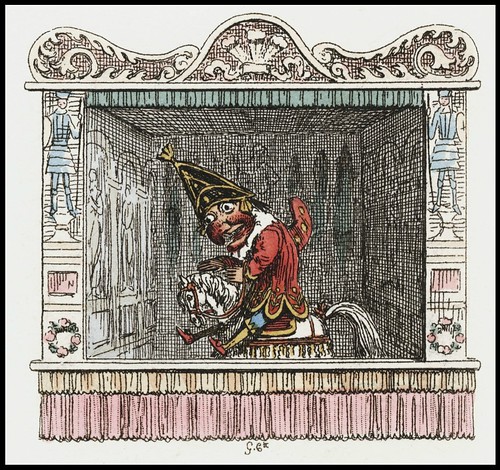
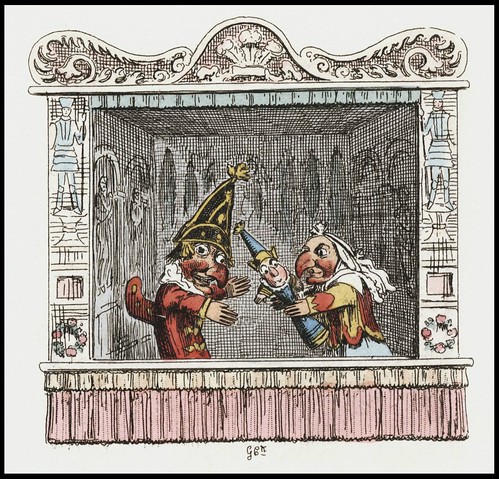
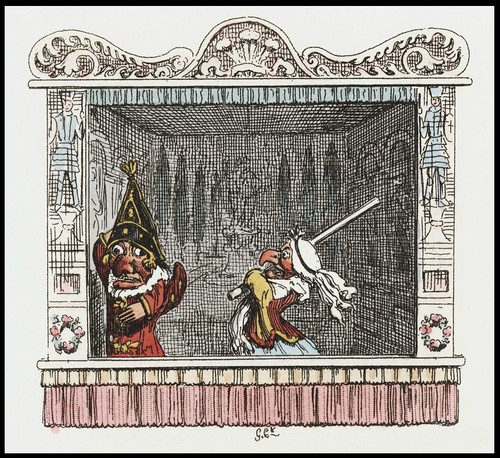
"Who'd be plagued with a wife
That could set himself free
With a rope or a knife,
Or a good stick, like me"



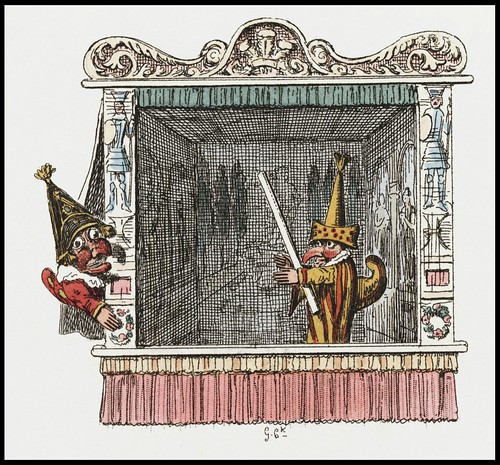

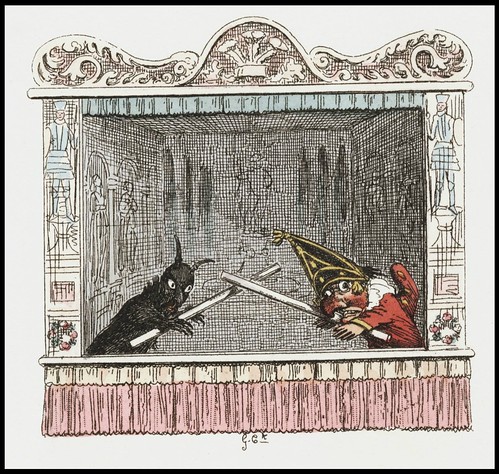

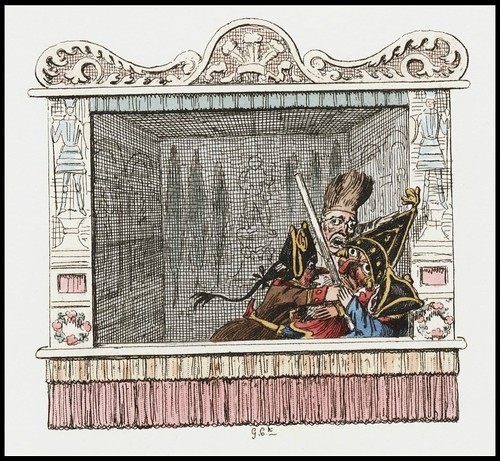
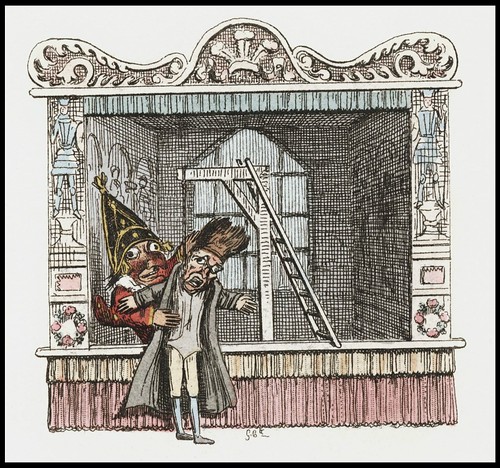

"The Character of Mr Punch is descended from the Italian clown Pulcinella who featured in the Commedia Dell' Arte [previously] medieval tradition of the 15th Century.
Players toured Europe and Samuel Pepys recalls seeing such a troupe in Covent Garden in 1662 during the festivities surrounding the wedding of Charles II. This date is considered 'Punch's Birthday' and Mr Punch first become popular in London under the name Punchinello before it was shortened to the Mr Punch we know today.
This new irreverent wooden star was taken up by British puppeteers for his moral story could be used to comment on the politics of the day and so he traveled around the country for the next century. By 1800, he had become a hand puppet in the little street corner stages used by travelling puppeteers and known as Puppet Booths, new characters were added, he gained a wife, called Judy and began taking on British theatrical traditions.
This transformation from an adult morality play with plenty of contemporary social comment and satire to the colourful knockabout 'Punch and Judy Show' we know today performed using Glove Puppets was brought about as Punch absorbed the comedy of the Slapstick theatrical tradition." [source]
- Etchings by George Cruikshank (pub. by S Prowett in London in 1828) accompanied the first written Punch & Judy script. The images are available via the Lewis Walpole Library at Yale University (search on 'Punch').
- Punch & Judy at Wikipedia.
- 'Punch and Judy: A Short History with the Original Dialogue' (J Collier & G Cruikshank)
- BBC: Puppet Show Faces Knockout Punch?
- Previously: George Cruikshank.



















1 comment :
It's Jan Claasen and Catrijn in Dutch
Post a Comment
Comments are all moderated so don't waste your time spamming: they will never show up.
If you include ANY links that aren't pertinent to the blog post or discussion they will be deleted and a rash will break out in your underwear.
Also: please play the ball and not the person.
Note: only a member of this blog may post a comment.